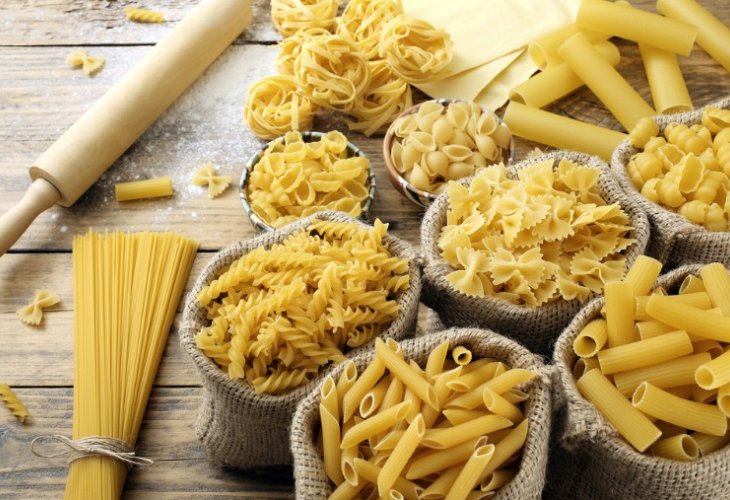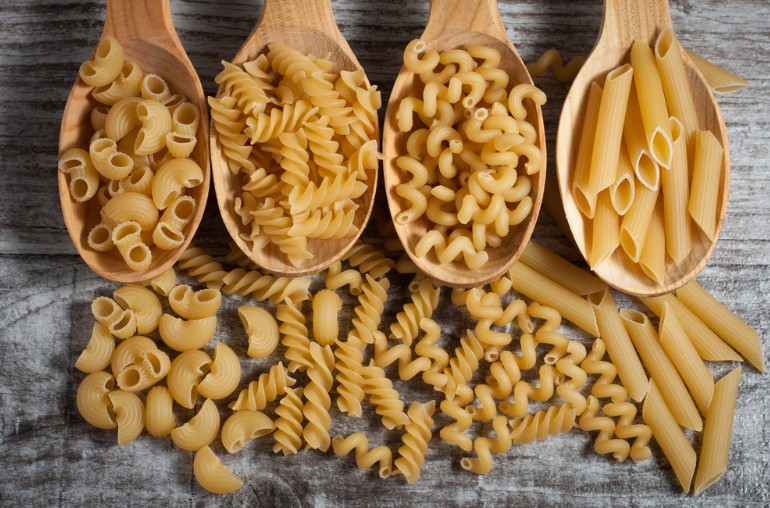Pasta - The Fascinating Journey from Durum Wheat to the Plate
Is it permissible to eat pasta without kosher certification? The pasta production process raises many questions on this topic. Let's get to know pasta and its production process
 (Photo: shutterstock)
(Photo: shutterstock)Some are strict about bread made by non-Jews yet lenient about pasta made by non-Jews. They claim that certain pasta brands available in foreign countries can be consumed without any kosher certification. They probably refer to dry pasta without eggs, a type similar in style to the macaroni familiar in Israel.
Well, before we get into details and problems, let's preface by noting that there might well be a local factory where the regional rabbi, who understands kosher supervision thoroughly, has visited in the past and believes there's no reason to forbid consumption from that factory, even without kosher supervision during all production hours, because he relies on the favorable conditions. Now, let's answer with a story that could have happened in reality...
After a long and exhausting journey in an open area, not really close to the city, the rabbi arrived at the entrance of the factory which spreads over a very large area, housing different production zones, so much so that he needed to drive between departments. Therefore, even after the rabbi arrived at the factory offices and saw the factory catalog offering and displaying all the different types of food the factory produces, such as pasta (in several shapes), spaghetti, cakes (both simple and filled), waffles (in various flavors), crackers (various flavors and shapes), biscuits, and so on, he wasn't overly concerned, because the factory is so large that the steam systems for each department are independent without connections between them, so there's no link between one production line and another. Additionally, workers are required to perform sanitation, wash their hands with disinfectant, and wear hats, gowns, gloves, and shoe covers. They're also not allowed to bring food into the factory, and the dining room isn't located near the production rooms, so there's almost no chance of any forbidden food contaminating the pasta production area.

The rabbi immediately focused only on the spaghetti and pasta production, which is mostly made from semolina flour derived from durum wheat, a type of premium wheat suitable for pasta production. This wheat is found in regions of Italy, Turkey, and other Mediterranean basin countries. By the way, when dealing with factories of this size, usually the supply of durum wheat to the factory comes from growing fields in the area, so the issue of the prohibition of "new grain" (chadash), which the rabbi planned to check first, was solved even before he investigated the factory - because in those areas, sowing time is mostly between September and November, while harvesting varies from region to region, but it's around May-June and in any case only during summer months. If so, we are assured that by the 16th of Nisan, the grain has already taken root and is no longer under the prohibition of "new grain."
What remained for the rabbi to check was who sifts the flour, what are the raw materials, and how the pasta is cooked. Regarding the separation of challah, there's no need to check at all, not only because pasta is cooked, but because the factory is owned by a non-Jew, which exempts the product from challah separation...
But to answer all the other issues, we need to understand the production process a bit.
The wheat from the fields is brought to huge silos located on the factory grounds, but before that, as the wheat passes from the truck to the silo, at the very first stage, the wheat undergoes cleaning from dust, straw, and stones through an air purifier using dry cleaning method. Sorting is also done to remove infected wheat, and additionally, the wheat goes through four stages of cleaning with cold water in centrifuge machines, besides wheat being peeled through brushing - so there's almost no chance that infected or infested wheat will be stored in the silo.
From the silo, the wheat is transferred to grinding machines through wide transport pipes. After grinding, the flour is transported through pipes to centrifugal sieves. The sifting process is done using four centrifugal sieves, with reasonable density, but there's still reason to worry that the sieves themselves might be a source of insects, because who knows when the inner sieve body underwent thorough and halachic cleaning.

But to solve this concern, they probably rely on the dough kneading process and the shaping of the spaghetti, because immediately after the flour is sifted in the last sieve very close to the extruder machines, the flour enters directly into a very large extruder machine, which kneads and shapes the spaghetti-pasta. This machine is like a room with windows built on top of a small tower. The machine casts shapes like hair hanging on a wide rod. In a conveyor belt process, the rod with the strands is moved inside the small chamber, from where it falls into a closed drying tunnel, and essentially that completes the spaghetti production.
The extruder machines perform several operations. At the front of the machine, there's a kneading mechanism that initially kneads the flour with water. During kneading, the flour is pushed by a spiral into a tube. At the end of the tube, there are very small holes through which the dough must exit. One can easily understand what compression pressure is needed for this... but that's not all, opposite those holes, there's again a kind of barrier, which is also perforated with holes in a hollow shape creating the form of hollow macaroni. These holes aren't exactly opposite the holes from the first stage, yet they're very close, so the compression level is very high, due to all the twists and small holes the dough has to pass through. This action causes all the dough to undergo very strong kneading, so that even if there was some whole wheat grain or anything else, it immediately melts and dissolves. This is also the reason why the macaroni (spaghetti) dough is so smooth, stable, and even hollow. It can be understood that if this action dissolves and melts all parts of the dough, it certainly grinds to fine dust any bug or worm that accidentally entered the dough, and if so, even if there were worms in the flour, they were ground to dust and nullified in the majority of flour, and by the way, in such situations there's not even a need for sixty times the amount of flour against them, and in practice, they are nullified by more than a thousand.
It's important to emphasize that this permission is mainly used in factories owned by non-Jews, to avoid the problem of intentionally nullifying a prohibition, though there's something to say about this too, since this nullification action isn't done to nullify the worms, but only to fix and make the dough suitable for producing spaghetti...
And to conclude - it's true that in this type they mix only flour and water, without other problematic raw material additives, but there's still a huge discussion about how we permit non-Jewish factories to cook, bake, and prepare pasta, to the point of drying the dough into the shape of spaghetti, without worrying about the prohibition of non-Jewish cooking. But we'll have to save that discussion for next time, God willing.

